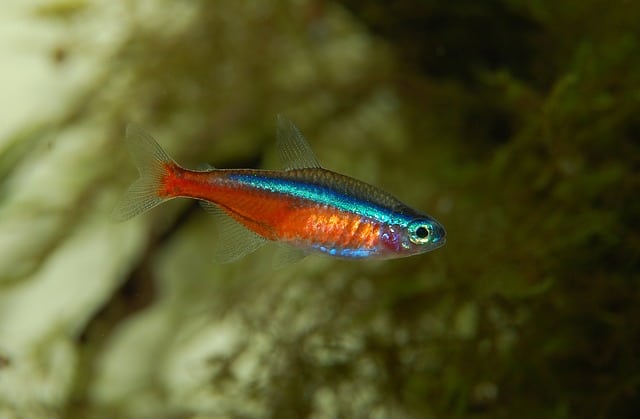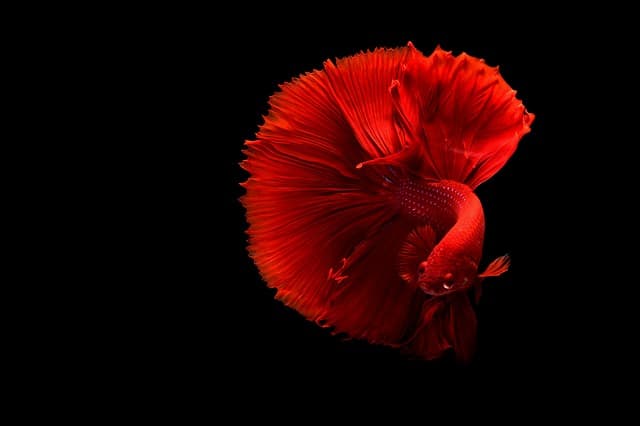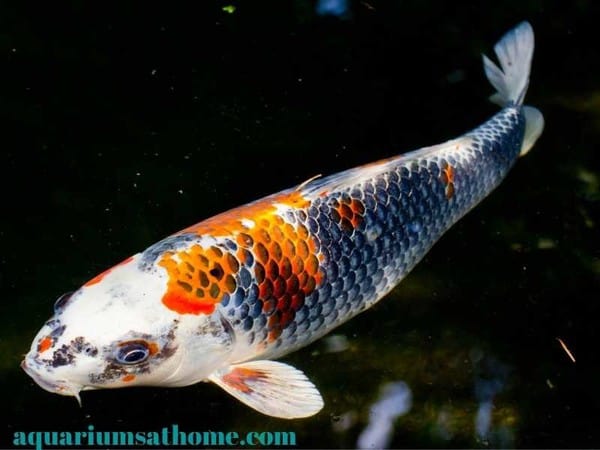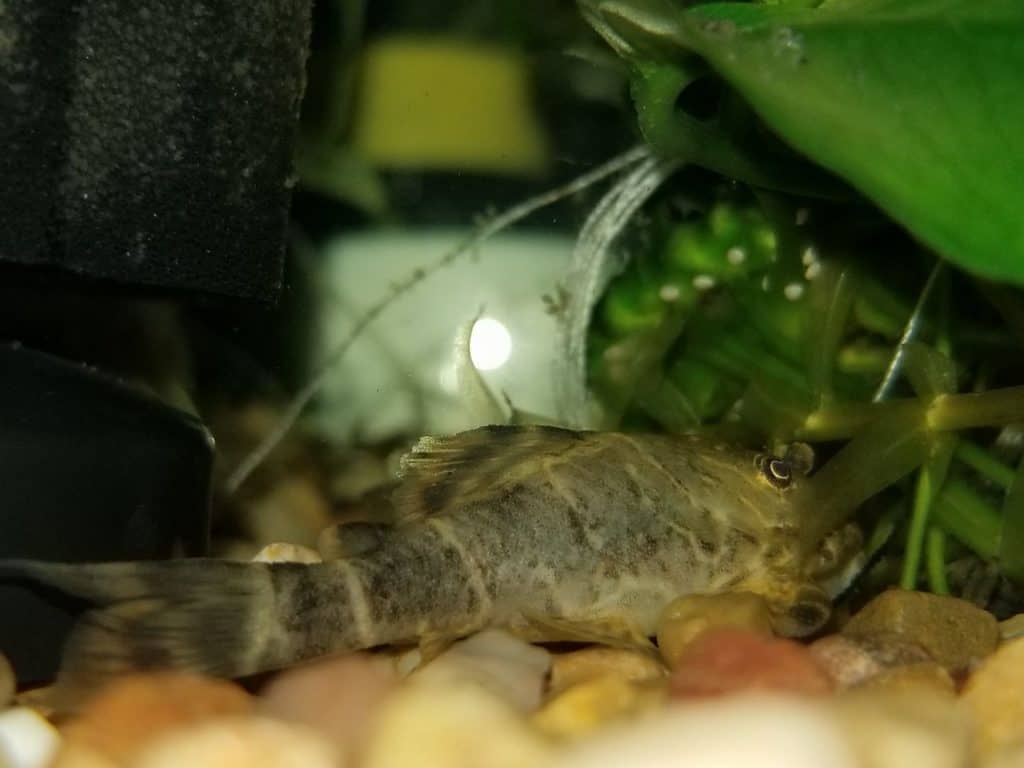Danios are a type of minnow and a popular choice among aquarium hobbyists. This active, hardy fish is peaceful in nature and easy to care for which makes it suitable for almost any freshwater aquarium set-up. But will in breed in a community tank environment? And the answer is…
Danios will breed in a community tank, provided the water and lighting conditions are conducive to spawning and the environment is safe – free of predatory or carnivorous fish and with lots of hiding places for cover. Since danios are egg-bearers (or rather ‘egg scatters’), they need a tank with plenty of room as well as plants, rocks, and gravel in which to lay their eggs.
Now that you know danios can (and do) breed in a community tank, let’s explore this topic further. I’ll explain how to tell if your fish are spawning, what size tank works best, and how to encourage successful mating. I’ll even discuss how to set-up a separate breeding tank and how to care for danio offspring.
So, if you’re ready to dive deeper into the reproductive world of the danio fish, then let’s begin!
How to Tell if Danios are Breeding?
You’ll know if your danios are breeding by their actions. Typically, at dawn or first light, a male will chase the female all around the tank in a frantic effort to mate with her. This behavior combined with the female’s bulging mid-section often signifies that she’s ready to lay her eggs.
Where Do Danios Lay Their Eggs?
Danios lay (or rather scatter) their eggs all around an aquarium – usually among plants, on rocks, and along the substrate. The only way they’ll successfully hatch in a community tank environment is if the parents (and other potential predators) are removed since danios are known to eat their own offspring.
Why Do Danios Chase Each Other?
Danios will chase each other when it’s time to mate. As a type of shoaling fish, they’ll also engage in a fun game of ‘tag’ as part of their socializing behavior. Chasing each other about the tank, which may be a sign of aggression for other species, is normal and typical among danio fish.
Why is My Danio Bloated?
If your danio is a female and appears bloated, chances are she’s pregnant! If she looks wider than usual and you notice other typical spawning behaviors such as being chased by a male at first light, then she’s probably carrying a roe and getting ready to lay eggs.
If it’s a male danio with a bloated belly, then it may be a condition known as swim bladder disease of ‘flipover’. This causes the fish to float rather than swim with its nose down and its tail up. In most cases, it can be treated with an antibiotic, unless it’s too far gone in which case, your fish likely won’t survive.
What Size Tank is Best to Breed Danios?
To breed danios, you need a 5- or 10-gallon tank with a filter and an air stone – to prevent the eggs from being sucked up into the filter. If you keep your danios in a large community tank, you can’t move them to a breeder net inside the aquarium since the males need ample space to chase the females around as part of their mating ritual.
What are Ways to Encourage Danio Breeding?
To encourage danio fish breeding, you must ensure the aquatic environment is favorable. Since danios are photoperiodic, they need adequate lighting and warm water to spawn. For starters, try keeping the aquarium light on longer throughout the day. Instead of the typical 8 hours of light and 16 hours of darkness, set it for 10 hours of light and 14 hours of darkness starting earlier in the morning.
Another way to promote breeding is to increase the temperature of the water by 2 to 5 degrees. Try upping the heat to 80 degrees Fahrenheit instead of the usual 75 to 78 degrees. If you don’t already have a heater in your tank, now is the time to invest in one. You can also move the tank closer to a window or directly under a lamp for a boost of light and heat.
What to Feed Danios to Encourage Breeding?
Feeding danio fish a protein-rich, high-quality diet will also encourage them to breed. Bloodworms and brine shrimp are a great addition to the typical flaked or pellet food options. As well, try feeding them twice a day instead of the usual once per day recommendation – just be sure not to overfeed – only give them enough food to consume in 2-minute time-period.
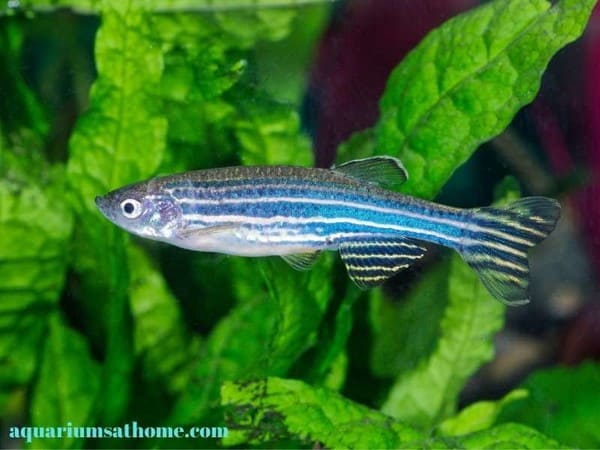
Will Danios Eat Their Own Eggs?
As mentioned above, danio fish will eat their own offspring. Therefore, it’s imperative that you either remove the adults or the eggs from the community tank immediately following fertilization. The best thing to do is set-up a separate breeding tank as outlined below:
- Take a 5 or 10-gallon tank and place a 1-inch layer of marble substrate along the bottom.
- Add 2 or 3 inches of warm, treated water to the tank.
- Place a mating pair of danios carefully into the tank.
- Watch for signs of spawning such as chasing each other around the aquarium.
- Remove the parents immediately after fertilization and place them back in the community tank.
- Observe the tank closely – watch for signs of life from the offspring.
- Feed baby fry infusoria which is cultured by soaking organic plant matter in a jar of aged water.
- A week after hatching, do a partial water change by removing 10 to 15 per cent of the liquid and replacing it with warm, treated water.
- Begin feeding danio fry brine shrimp in addition to infusoria 10 days after hatching.
- Once the babies reach an inch or more in length, move them to the community tank.
If you don’t have a separate aquarium and want to breed danios in your community tank, then you must ensure it’s heavily planted. Lush vegetation will help hide the eggs from hungry adults. As danio eggs are tiny, transparent, and difficult to see with the naked eye, the greenery helps camouflage the offspring.
The undeniable truth, however, is that the majority of danio eggs in a community tank won’t survive. Being eaten by the parents is the mostly likely cause of death. Since a single danio female can lay up to 100 eggs per breeding season, chances are good that some will indeed survive and grow to maturity.
How to Care for Juvenile Danios in a Community Tank?
Caring for danio offspring is easy. Once they’ve been successfully reared in the breeder tank, they’re usually ready to be placed into a larger community tank about 4 to 6 weeks after hatching. The juveniles will eat what you feed the adults such as bloodworms, brine shrimp, frozen vegetables, plankton, dried flake food, and pellet supplements.
The key is to ensure the tank is safe and free of aggressive, predatory fish. Never keep larger carnivorous fish with danio offspring in a community tank environment as they’re likely to be eaten! Choose similar-sized peaceful herbivorous or omnivorous fish like mollies, platies, and swordtails as tankmates. Heavily planted tanks with lots of hiding places are also recommended as they provide cover for juvenile danios.
Conclusion
To summarize, danios will breed in a community tank environment with the proper water and lighting conditions. They need a large aquarium with plenty of space to chase each other around since this is an essential part of their mating ritual. The tank should also be free of predators and heavily planted with rocks and gravel throughout. These provide cover as well as a place for eggs to be laid safely.
I trust this article has answered your questions pertaining to danio fish and their reproductive nature while in captivity. Thanks for reading and good luck with your aquarium hobby!
Related Posts
Will Different Types of Danios School Together?
How Do You Know if a Danio Fish is Pregnant?
How to Breed Kissing Gourami Fish?



